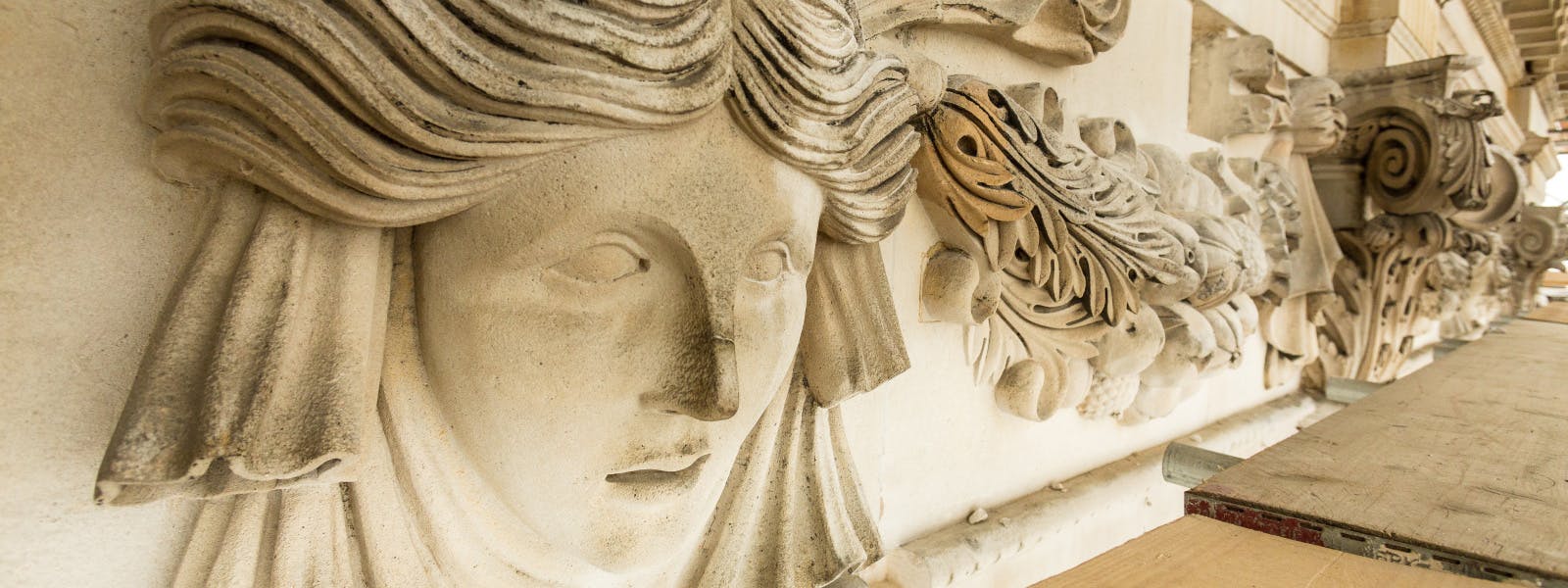
The Banqueting House, Inigo Jones's masterpiece of classical architecture, is one of the first examples of the principles of Palladianism being applied to an English building. It marks the beginning of a revolution in British architecture.
Having travelled to Italy and seen the buildings of the ancient world and the Italian Renaissance, Inigo Jones decided to recreate something of their effect in rainy London, for King James I. Jones was fascinated by the order and logic of classical buildings, and by the style, shape and colour of classical architectural ornament.
He made detailed drawings and notes, recording his observations on the ruins, palaces and churches he visited on his travels. Later, many of these shaped his own designs for buildings and masque scenery.
Jones intended the Banqueting House to look like a piece of ancient Rome transposed to Whitehall, and the effect was extraordinary.
When
Open for guided tours on specific dates
Ticketing information
Included in palace admission (members go free)
Buy Banqueting House ticketsRecreating ancient Rome in London
Inigo Jones originally built the Banqueting House's façade with three different types of stone, each in different tones. In the 1830s, the outside of the building was re-faced in white Portland Stone by John Soane, though the architect was careful to preserve the original design in his new stonework.
The great height of the Banqueting House meant that it towered above the rest of Whitehall Palace – it was a real statement. Today, the Banqueting House is hard to distinguish from the later neo-classical buildings which surround it, but four centuries ago it was the pioneer for this architectural style.
The street (West) façade is exactly the same as the on the other (East) side. This is because the view of the Banqueting House from the River Thames was once as significant as the view of it from Whitehall.
The Banqueting House was originally entered through the corridors of Whitehall Palace, which burnt down in 1698. Today, the entrance is through an annex built by architect James Wyatt over a century later.
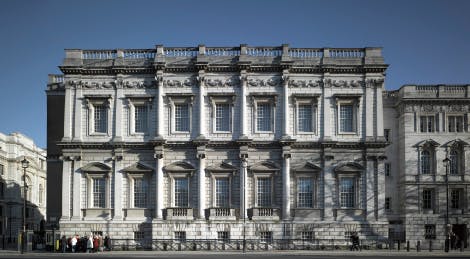
Architectural highlights
Inigo Jones was careful to use the classical ‘orders’ correctly on his building, just as he had seen in ancient Roman constructions, and in the palaces designed by the great Venetian Renaissance architect, Andrea Palladio.
At Banqueting House, the status of the interior of the building is reflected on the outside. At basement level, the exterior is faced in ‘rusticated’ stonework, with no ornamental carving. By contrast, the double-height main hall above it is faced with dressed stone, columns, capitals, balustrades, a pronounced string course separating the lower from the upper level, and a carved frieze of masks and garlands.
At the centre of the façade, the central three bays are pushed further out into the street, to create a central focus for the building. The capitals are simple ‘ionic’ ones at low level, whereas at upper level they are the opulent Corinthian type.


The beautifully carved frieze of classical drama masks and garlands of fruit and flowers around the top of the building reflects the original purpose of the Banqueting House – as a venue for masque performances.
Perched on the roof is a huge wrought iron weathervane, installed in 1688 for James II, which is still in working order. The weathervane was installed to fore-warn the king of weather conditions which might prove favourable for an invasion.
EXPLORE WHAT'S ON

- Things to see
Rubens ceiling
Marvel at Sir Peter Paul Rubens' ceiling in its original setting of Inigo Jones' spectacular Banqueting House.
- Open for guided tours on specific dates
- Banqueting House
- Included in palace admission (members go free)
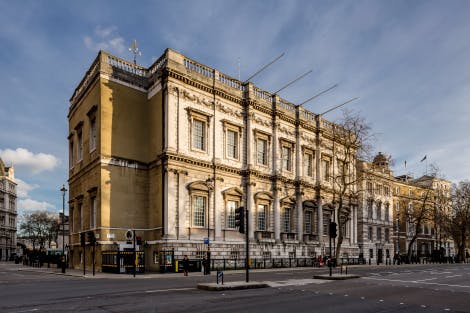
- Things to see
Charles I’s execution site
Walk in the footsteps of the condemned King and stand on the spot of Charles I's execution, just outside Banqueting House.
- Open for guided tours on specific dates
- Banqueting House
- Included in palace admission (members go free)

- Things to see
Art and sculpture
See images of James I and Charles I among the important collection of art and sculpture at Banqueting House.
- Open for guided tours on specific dates
- Banqueting House
- Included in palace admission (members go free)
BROWSE MORE HISTORY AND STORIES
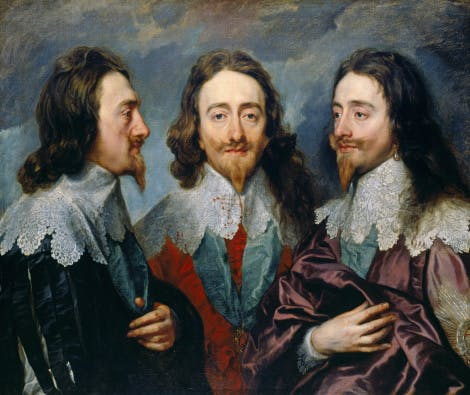
The execution of Charles I
Tried and sentenced to death for high treason

The masque
A fabulously extravagant early 17th century court entertainment
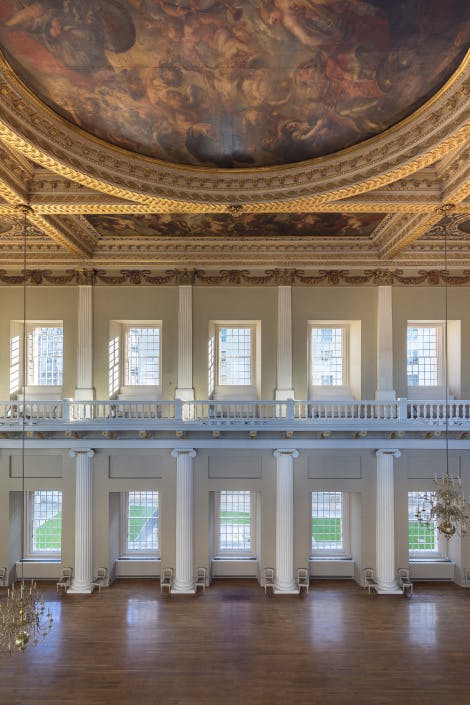
The Rubens ceiling
The crowning glory of the Banqueting House
Shop online

Shop homewares
In our home section you will find stylish lifestyle home accessories and furnishings, including cushions, tapestries, ornaments and much more which will add those finishing touches to make your room complete.
From £5.00

Shop Banqueting House Gifts
Our wonderful collection of gifts and souvenirs are all inspired by the Banqueting House.
From £4.00
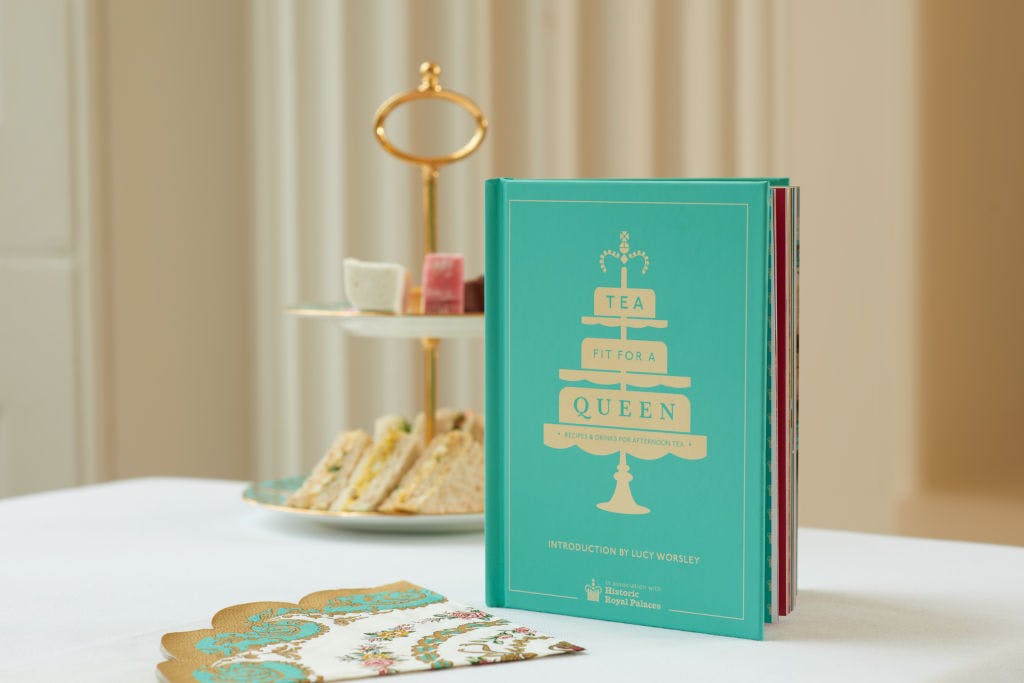
Shop HRP Books & Publications
Discover books inspired by the palaces in our care, learn about fascinating periods of British history, including our official palace guide books, children's books and more.
From £2.50
